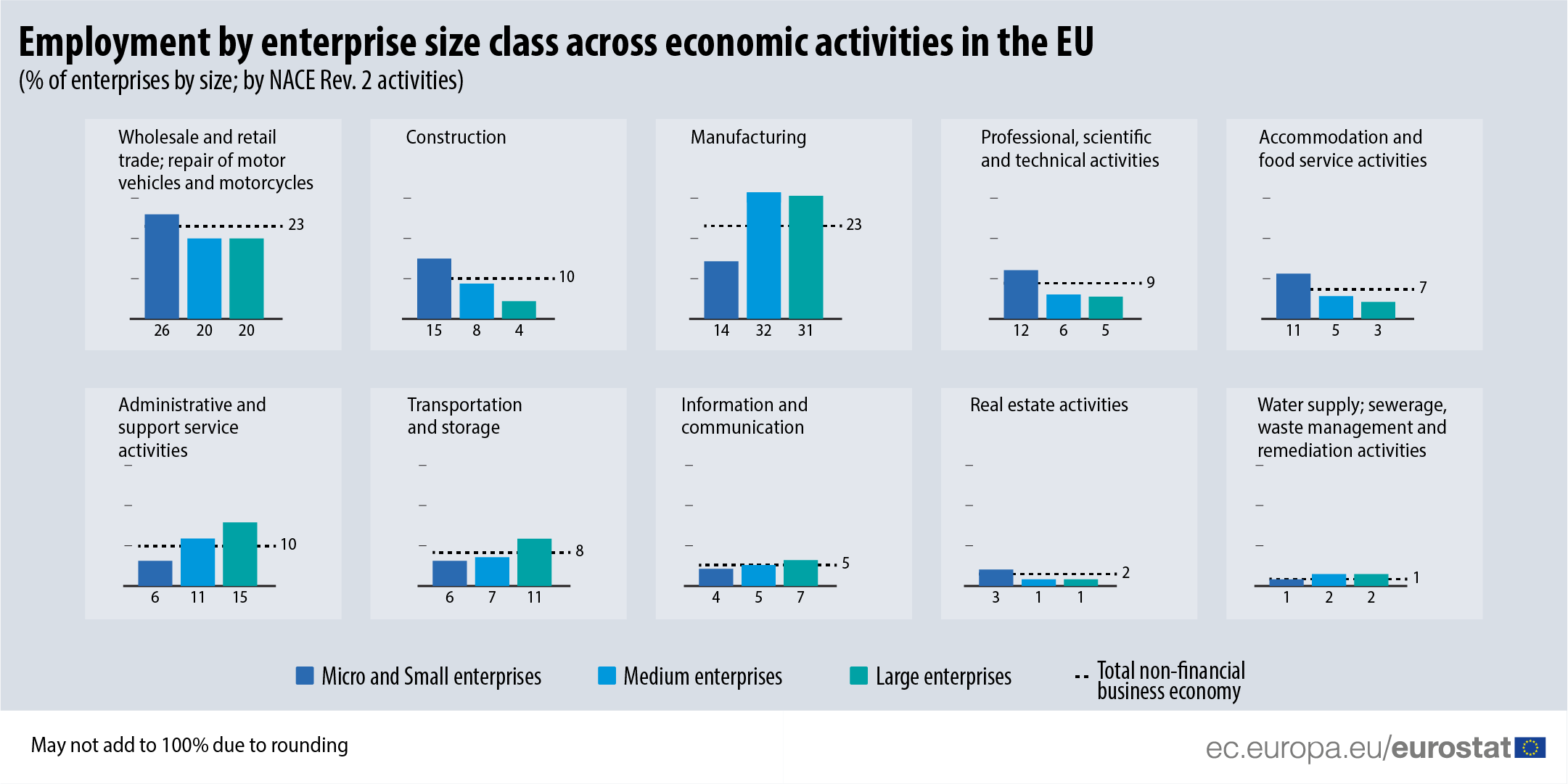November 1, 2022
Small and medium-sized enterprises (SMEs) — in other words, enterprises with fewer than 250 persons employed — are often referred to as the backbone of the European economy, providing jobs and growth opportunities.
The overwhelming majority (2020: 99%) of enterprises in the EU’s non-financial business economy were enterprises with fewer than 49 persons employed (micro and small enterprises), followed by medium enterprises (50-249 persons employed) with less than 0.9% of all enterprises. In contrast, just 0.2% of all enterprises had 250 or more persons employed and were large enterprises.
This information comes from data published by Eurostat today. The article presents a handful of findings from the more detailed Statistics Explained article on structural business statistics.
Value added decreased by 6% in 2020
In 2020, at the height of the pandemic, many enterprises closed, and employees were laid off. Consequently, the non-financial business economy reported €6.5 trillion in value added at factor cost, a significant decrease (-6%) compared with 2019 (€6.9 trillion). SMEs recorded €3.4 trillion in value added, representing a smaller decrease of 5% (€3.9 trillion in 2019).
The number of persons employed in the non-financial business economy amounted to 127.7 million in 2020, down 3% from 131.5 million in 2019.
The total number of enterprises increased slightly to 23.4 million, a 1% increase from 23.2 million in 2019. However, the increase was only in the number of SMEs. The number of large enterprises decreased by 3.4% (43 500 in 2019 to 42 000 in 2020).
SMEs showed a fair resilience during the year 2020, recording a smaller decrease in value added than large enterprises, and increasing in number compared to the previous year.
Employment in the non-financial business economy
In 2020, there were 23.3 million SMEs in the EU’s non-financial business economy, contributing over half of the total value added (52%, €3.4 trillion).
SMEs employed 82.0 million people in 2020, accounting for 64% of all employed. Over half of them were employed in three economic activities: distributive trades sector (19.9 million people, 26% of micro and small enterprises and 20% of medium-sized enterprises’ employment), manufacturing (15.3 million people, 14% and 32%) and construction (11.2 million, 15% and 8%).
Source: Eurostat
Legal Notice: The information in this article is intended for information purposes only. It is not intended for professional information purposes specific to a person or an institution. Every institution has different requirements because of its own circumstances even though they bear a resemblance to each other. Consequently, it is your interest to consult on an expert before taking a decision based on information stated in this article and putting into practice. Neither Karen Audit nor related person or institutions are not responsible for any damages or losses that might occur in consequence of the use of the information in this article by private or formal, real or legal person and institutions.








